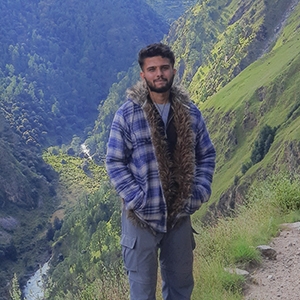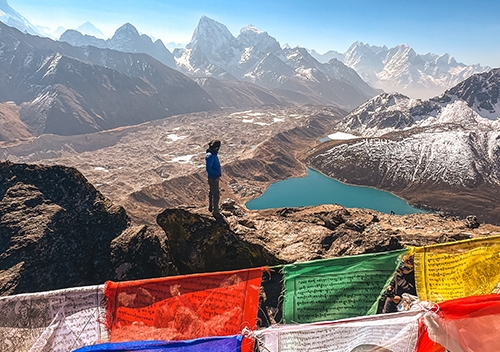So, you've made the decision, you’re trekking in the Himalayas. That was the effortless part. Now comes the exciting yet demanding decision: Which trek is best for you to do in Nepal? With so many legendary trails in Nepal, it’s natural to feel confused while choosing. But if crystal-clear alpine lakes draw your attention, two names probably top your list: Tilicho Lake and the Gokyo Lakes. Nepal, with its soaring peaks and rich cultural heritage, offers some of the most stunning high-altitude lakes on Earth. Among them, Tilicho and Gokyo stand out like secret gems, each outstanding, each different, and both guaranteed to leave an eternal impression.
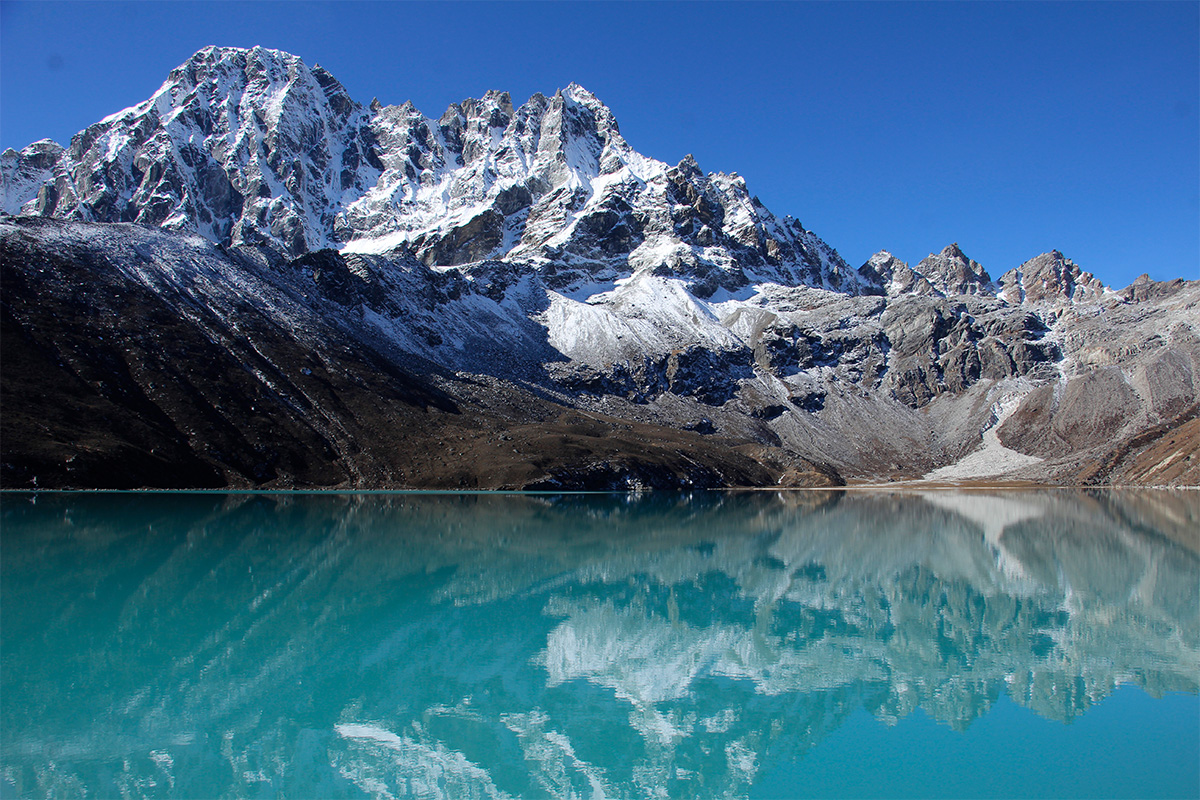
Both Tilicho and Gokyo Lake treks have earned their place as awesome high-altitude adventures, each offering beautiful mountain views, challenging routes, and the rare beauty of glacial lakes. However, don’t confuse one with the other. These treks may share the same scenic Himalayan backdrop, but they tell entirely separate stories. Picking between them isn’t easy, especially when both offer something truly exceptional. That’s where this blog comes in, to help you understand their differences and guide you toward the trek that matches your energy and adventure goals.
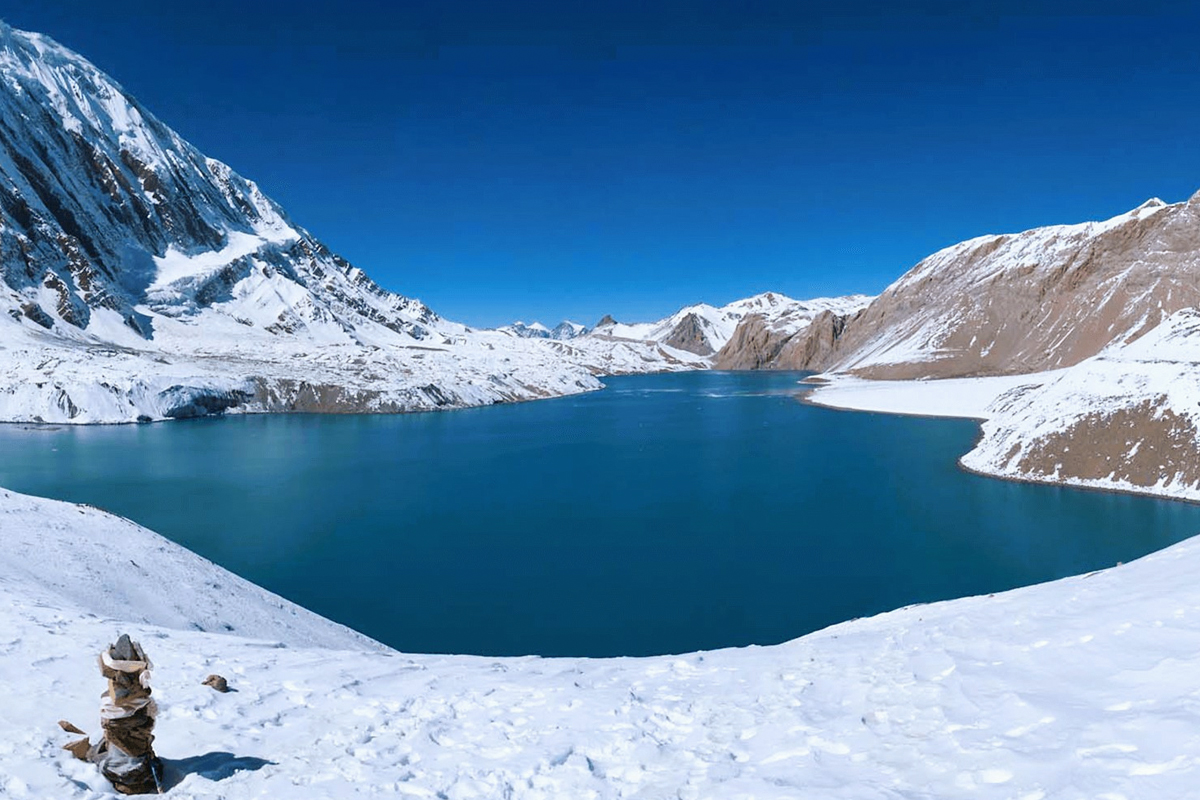
This isn’t a contest to declare one trek better than the other; comparing them is like choosing between the sun and the moon. Instead, it’s about figuring out which trek fits you best. If you’re stuck choosing between these two mythical routes, this guide will help you make the right call. We’ll explore what each trek brings to the table, underline their differences, and show you why either choice will lead to an extraordinary adventure.
Overview of Tilicho vs Gokyo Lake Trek
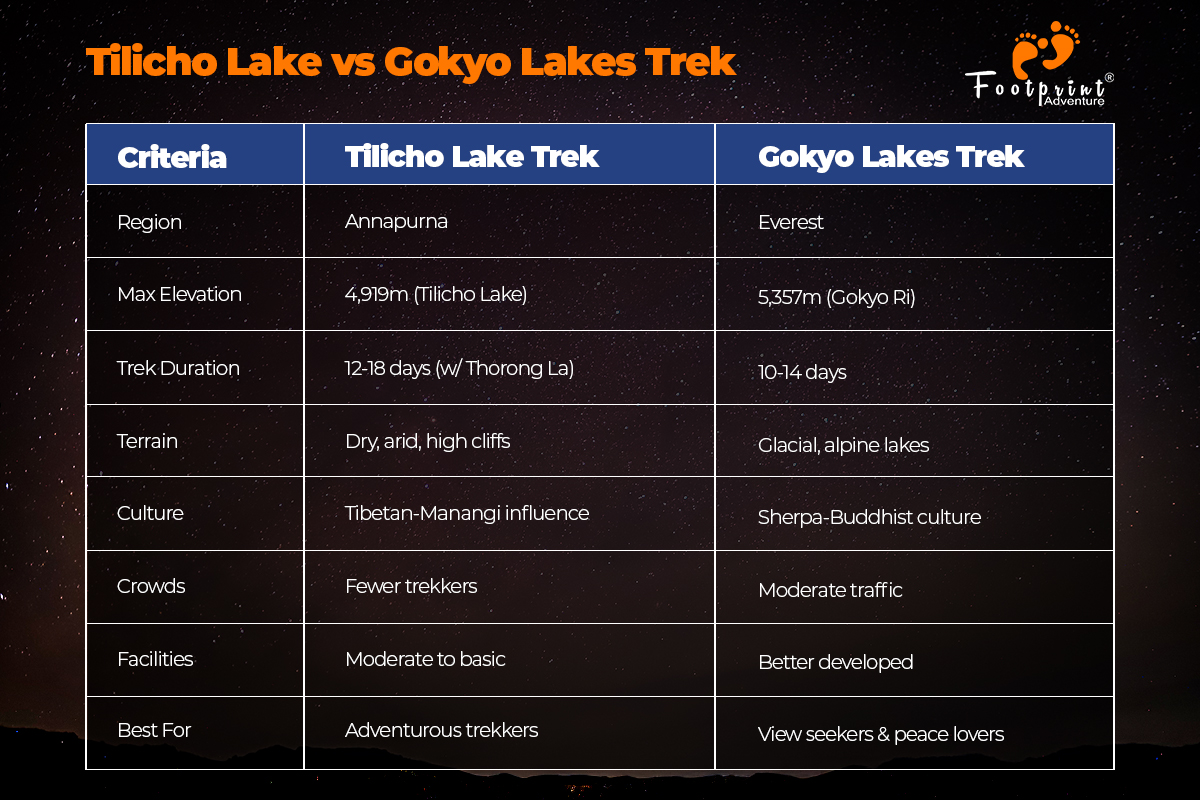
Tilicho Lake
- Starting Point: Besisahar or Chame
- Region: Annapurna (Western Nepal)
- Highlights: Manang Village, Annapurna Circuit trail, Thorang La (optional)
- Ending Point: Besisahar or continue over Thorang La Pass into Manang
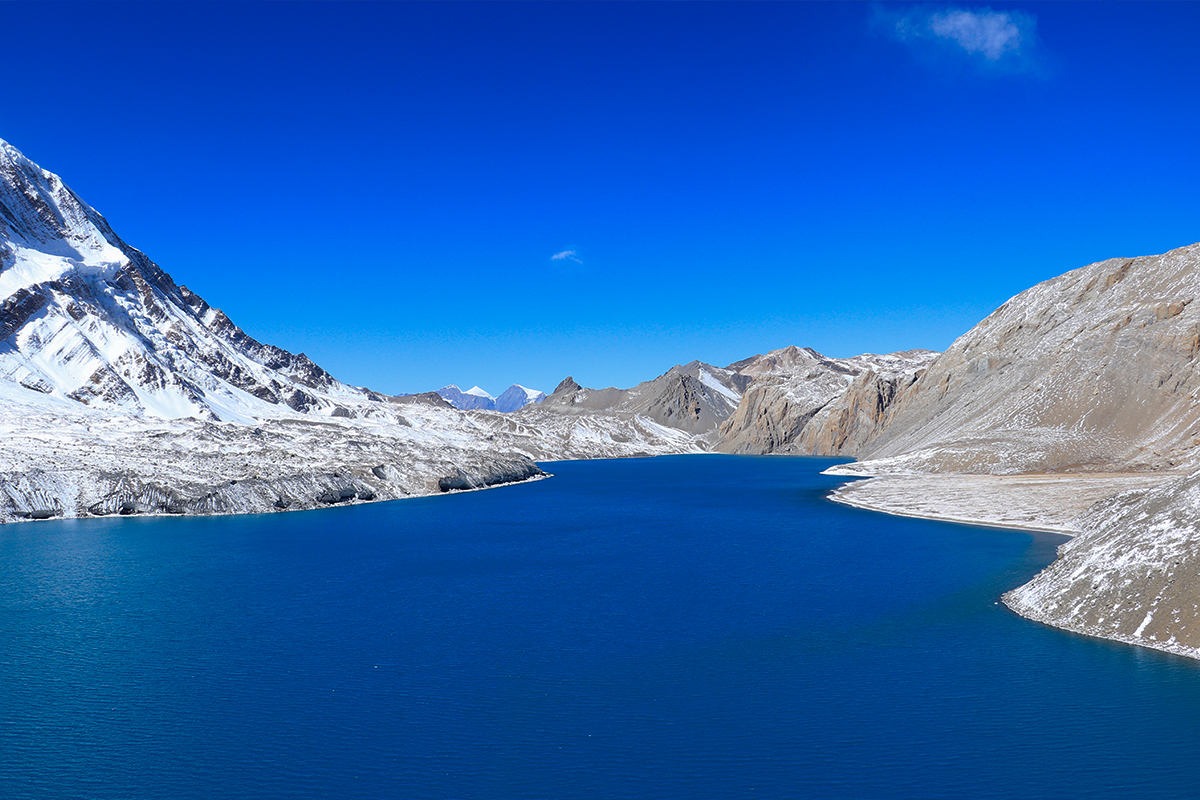
Visualize yourself standing beside a vast, sky-blue lake at 4,919 meters above sea level. The water lies so calm that it reflects the giant ice-covered mountain wall like a mirror. The air feels thin, and a mysterious hush surrounds you, interrupted only by blows of wind or the faraway echo of shifting ice. This is Tilicho. Often called the highest lake of its size anywhere on the planet, Tilicho Lake sits among snow-covered cliffs and rough ridges. Holy to both Buddhists and Hindus, this magical lake adds spiritual depth to its raw beauty. Trekking it requires a tough side journey off the main Annapurna Circuit, but that only makes the adventure feel more deserved, more unforgettable.
Gokyo lakes (A chain of sacred glacier lakes)
- Starting Point: Lukla
- Region: Khumbu/Everest (Eastern Nepal)
- Highlights: Namche Bazar, Machhermo, Gokyo Ri, Ngozumpa Glacier
- Ending Point: Lukla or continue to EBC via Chola Pass
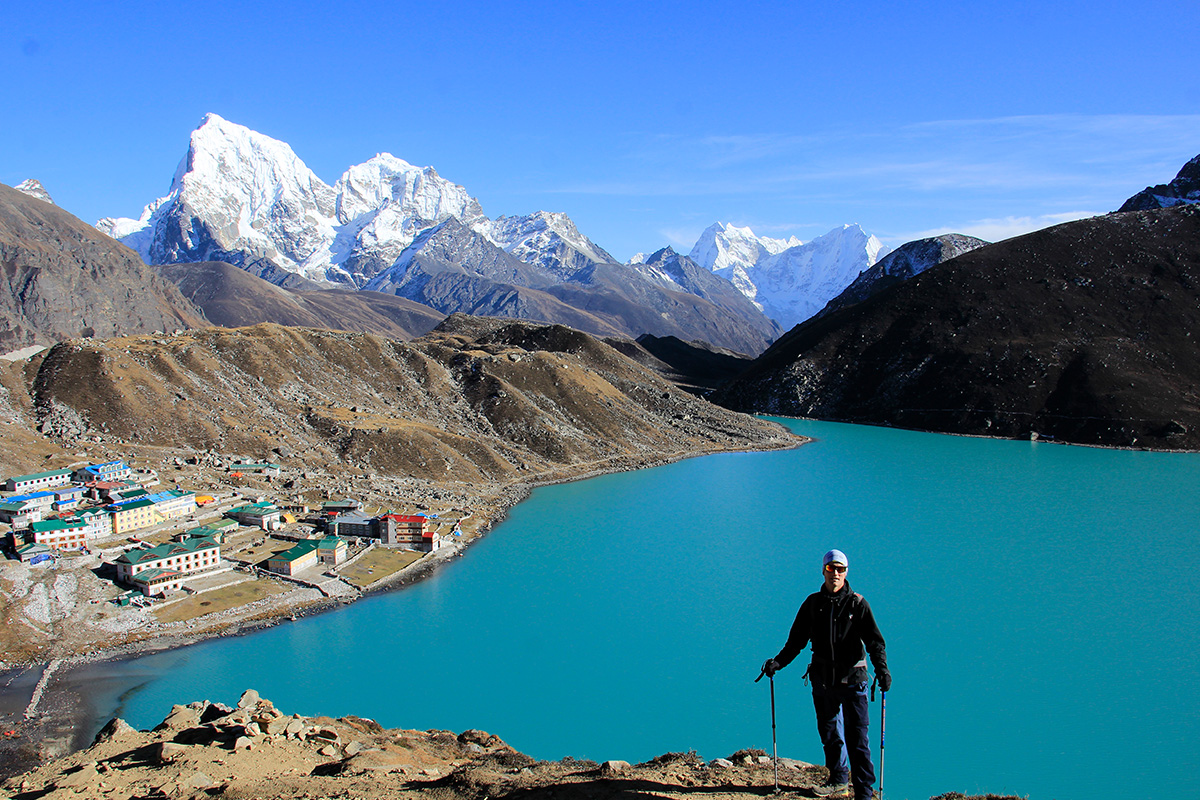
Gokyo isn’t just a destination: it’s a trip through a chain of six sacred, crystal-clear high-altitude lakes. Located in the Everest territory, the Gokyo Valley showcases radiant turquoise waters fed by the mighty Ngozumpa Glacier. Trekkers usually climb Gokyo Ri (5,357 meters) to witness the most sensational views in the Himalayas, with Everest, Lhotse, Makalu, and Cho Oyu all standing tall in one frame. Among the lakes, Dudh Pokhari, the third and most iconic, catches the most attention, with the serene village of Gokyo situated right on its shore.
The Journey: Two different worlds
The Tilicho route diverges from the classic Annapurna Circuit, offering either a captivating extension or a standalone trekking experience. The trail leads you through the Marsyangdi Valley and into the dry, Tibetan-influenced terrains of Manang before climbing toward Tilicho Base Camp and the lake. The toughest section of the trip lies on the way to base camp, where you cross an infamous, landslide-prone section, but don’t worry, experienced guides/leaders always lead the safest path. The trail feels raw and exposed, constantly reminding you that you’ve stepped into a rugged, untouched world. It’s a true high-Himalayan adventure at its purest.
The Gokyo route offers a more peaceful path compared to the engaged Everest Base Camp trail, yet it still delivers breathtaking grandness, mainly from the summit of Gokyo Ri. The journey initiates with a thrill as you fly into the legendary Tenzing-Hillary Airport in Lukla. From there, giants like Ama Dablam, Lhotse, and Nuptse overwhelm the skyline. As you trek, you’ll cross scenic suspension bridges, spin prayer wheels in lively Sherpa towns like Namche Bazaar, and engage yourself in the deep spiritual energy of the area. As you approach Gokyo, the enormous Ngozumpa Glacier, one of the longest in the Himalayas, takes over the landscape, and you’ll walk alongside its huge moraine, a grand blend of ice and stone.
Note: You can reach the Gokyo Lakes either by following the Everest Base Camp route or by taking a direct trail after Namche Bazaar, which passes through scenic villages like Dole and Machhermo.
Acclimatization & Difficulty Level
Both are demanding high-altitude treks and require perfect physical fitness and appropriate acclimatization. But the nature of the challenge differs. The difficulty level of both lake treks primarily depends on the route you choose and the precise itinerary you follow, as the highest elevation points can vary accordingly.
Tilicho Trek: The most challenging part of the journey lies in the side trek from Manang to Tilicho Lake and back, which extends your Annapurna Circuit trek by about 3 to 4 days. You gain altitude fast here, and the trail to Tilicho Base Camp can feel mentally exhausting because of the landslide-danger terrain. After that, you still need to cross the Thorong La Pass at 5,416 meters (17,769 feet). It’s a trek that tests your endurance, particularly during this demanding push.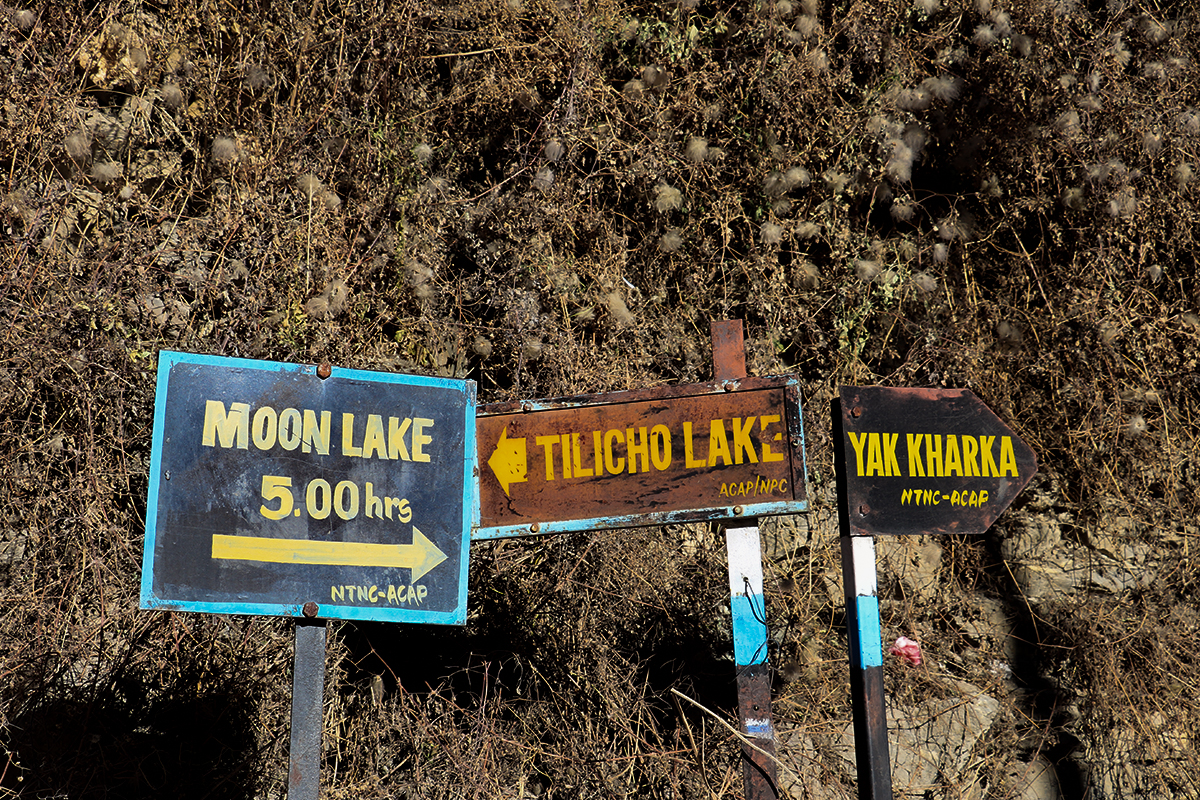
Gokyo Lakes: This journey keeps you at higher elevations from the very beginning. Lukla is already located at 2,860m. The true challenge comes from the regular exposure to high altitude throughout the trek. You’ll acclimatize with a hard but rewarding ascent to Gokyo Ri at 5,357 meters (17,575 feet), which offers one of the most spectacular views in all of Nepal. If you're up for even greater adventure, you can cross Renjo La Pass (5,360m) or Cho La Pass (5,420m), both of which add serious technical difficulty and connect you to neighboring valleys and routes.
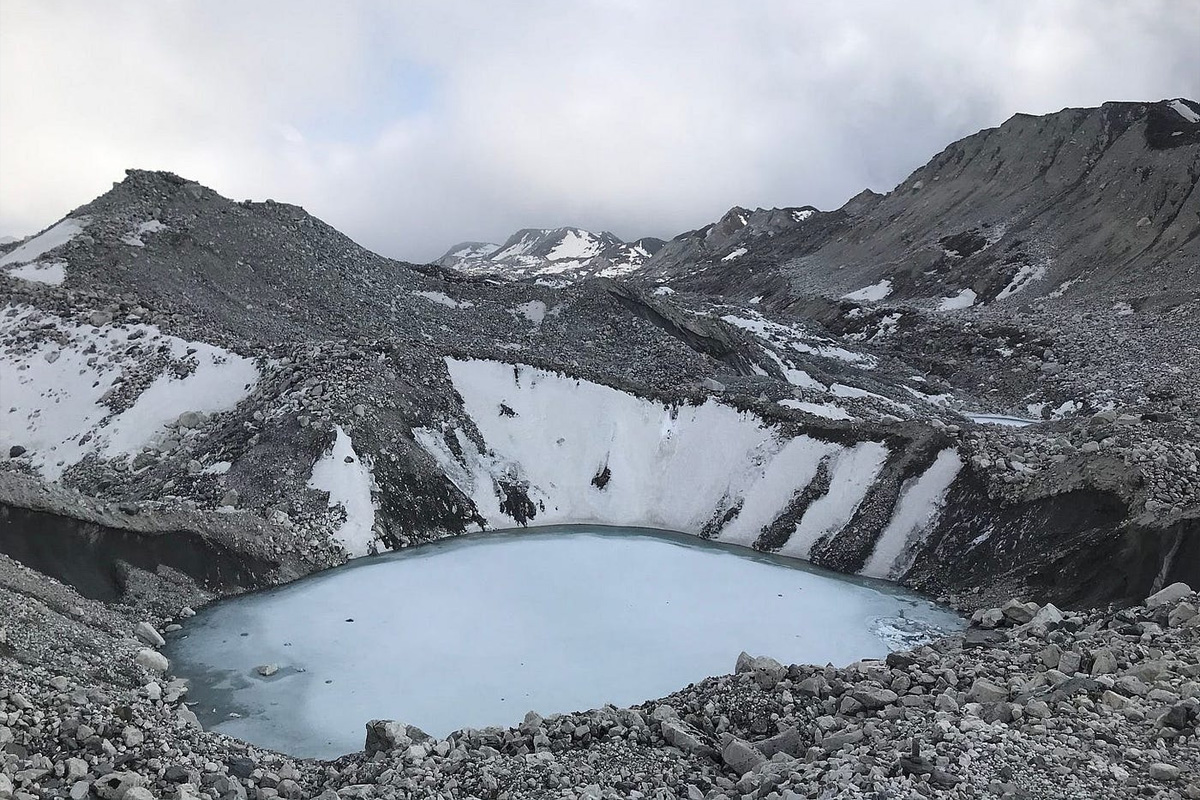
Note: Both treks test your boundaries, but in different ways. Tilicho throws a more intense and tough challenge during its side-trip, while Gokyo requires constant endurance and alertness due to its invariably high elevation throughout the journey.
Culture, Cost & Logistics
Tilicho (Annapurna): You’ll journey will start with the generous hospitality of the Gurung communities in the lower hills and slowly enter the high valleys where the Tibetan-influenced Manangi people live. Along the route, tea houses welcome you with comfortable stays and a few unexpected treats, like the region’s special apple pie!
This trek is typically more budget-friendly. You can reach the trailhead by bus or jeep from Kathmandu or Pokhara, bypassing costly domestic flights.
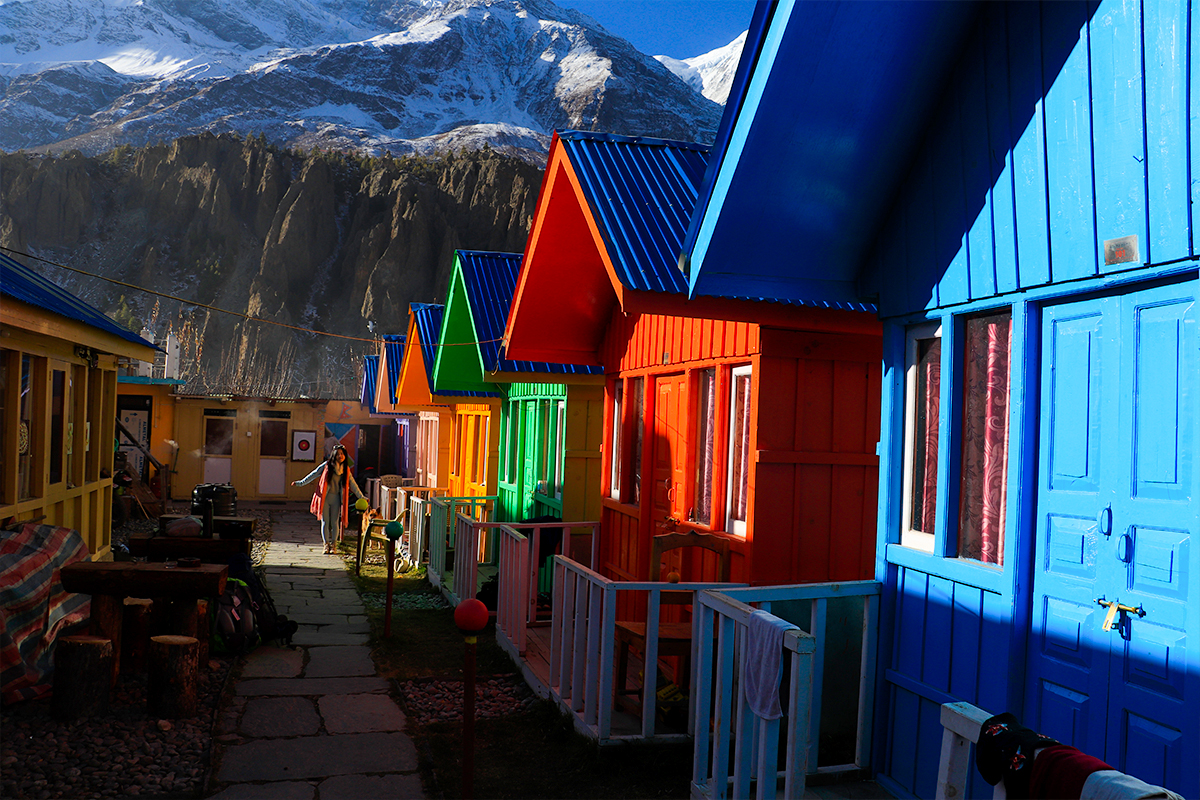
Gokyo (Khumbu): The region’s culture closely aligns with Tibetan Buddhism and the spirit of mountaineering. You'll pass by multicolored prayer flags, ancient chortens, and monasteries, especially the iconic Tengboche Monastery, if you take a detour. The air carries the legacy of Everest expeditions.
The major cost comes from the mandatory flight from Kathmandu to Lukla. Since porters, helicopters, or yaks transport all supplies into the Khumbu, expect higher prices for food and accommodation throughout the trek.
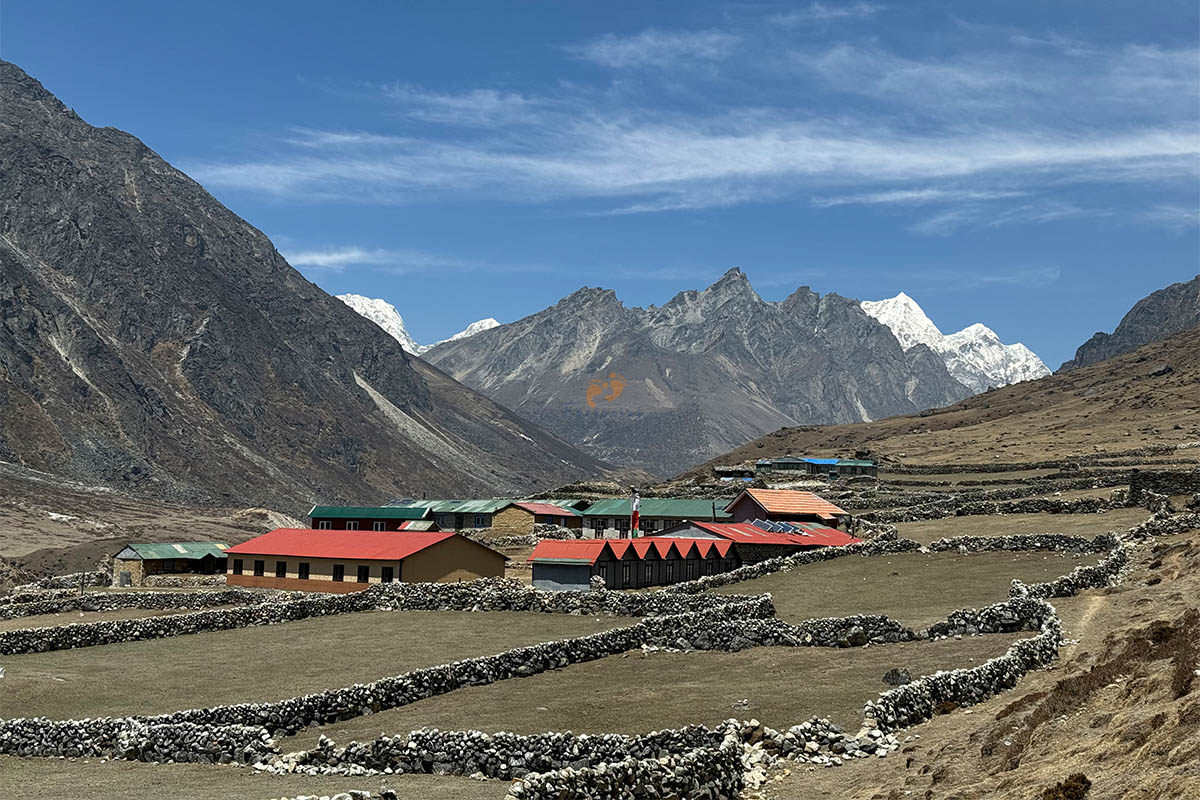
Accommodation & Facilities
During the Tilicho Lake Trek
- Tea Houses: Decent and easily available along the whole route
- Tilicho Base Camp: Basic, comfortable accommodation and a decent food menu
- Wi-Fi & Showers: Available everywhere (it is recommended not to take a hot shower after Shree Kharkha for your own safety and health concerns)
Tilicho is still an isolated area, so after Manang, things get more basic. Be prepared for rustic conditions and limited menus.
During the Gokyo Lakes Trek
- Tea Houses: Excellent infrastructure with a wide variety of food choices, even in higher villages
- Gokyo Village: Cozy lodges with bakery cafes available
- Wi-Fi & Showers: Slow but surprisingly available
Thanks to its popularity among adventurers, the Gokyo region offers more convenience without compromising the adventure.
Photography Opportunities
Tilicho: Early morning reflections on Tilicho Lake, the scenic cliffs around the lake, frozen surfaces in spring or winter.
Gokyo: Amazing glacier views, Everest panorama from Gokyo Ri, and alpine sunrise hues.
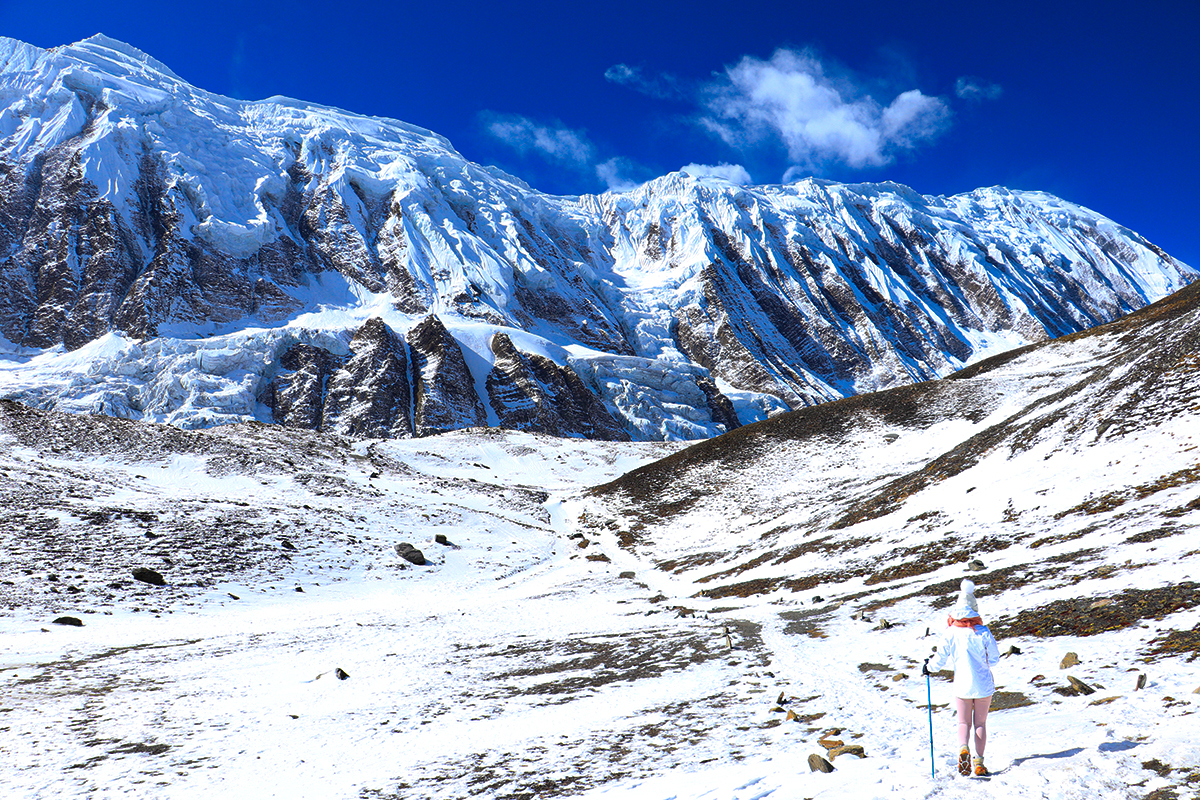
Best Time To Go
For both treks:
- Autumn (Sept-Nov): Vibrant forests, stable weather, clear skies
- Spring (March-May): Best temperatures, rhododendron blooms
- Off Seasons: Winter (snowy/too cold) & Monsoon (cloudy/slippery)
So, Which One Should You Choose?
For Tilicho:
- You want to experience the whole diversity of the Annapurna Circuit.
- You are on a tighter budget.
- You are captivated by picturesque, barren, high-desert landscapes.
- The charisma of visiting a single, enormous, almost mythical lake makes you happy.
For Gokyo:
- The thrill of the Lukla flight excites you.
- You want to engage yourself sincerely in Sherpa culture.
- Your prior dream is to witness Mount Everest and other giants with your own eyes.
- You are charmed by the idea of multiple, vibrant turquoise lakes.
- You love the natural magnificence of glaciers and moraines.
Still Can’t Decide?
In the end, there’s no such thing as a wrong selection. Whether you choose Tilicho or Gokyo, both treks will test your boundaries, recast your perspective, and leave you with exceptional memories. Each adventure will reveal your internal potential and reconnect you with the raw, sensational force of nature.
Let Footprint Adventure help you plan based on your background level, attraction in culture vs scenery, or time limitations. Drop your thoughts below or reach out directly. We've guided both, and we know how magical they can be.












